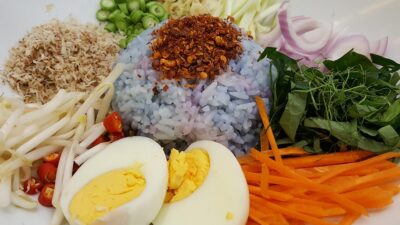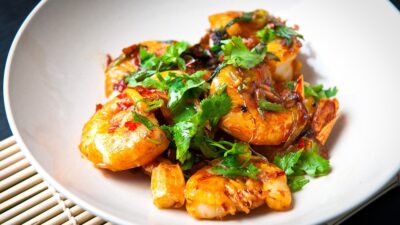Indian street food is a delightful reflection of the country’s rich culinary heritage, showcasing a myriad of flavors, textures, and cultural influences. Over the decades, street food in India has evolved from traditional favorites like chaat to contemporary fusion dishes, capturing the hearts (and palates) of a diverse audience. This article delves into the transformation of Indian street food, highlighting its historical roots, regional variations, and the impact of globalization.
Historical Roots
Street food in India has ancient origins, with evidence of food vendors from as far back as the Indus Valley Civilization. The streets of ancient cities buzzed with vendors selling a variety of snacks, catering to the local populace’s needs. With the advent of the Mughal Empire in the 16th century, influences from Persian cuisine began to seep into Indian food culture, resulting in the introduction of rich, savory dishes like kebabs and biryanis, which are now staples of many street food stalls.
The street food scene began to crystallize in the late 19th and early 20th centuries, particularly in urban centers like Mumbai, Delhi, and Kolkata. Dishes such as pani puri, bhel puri, and vada pav emerged as affordable and accessible options for the working class. Each region contributed its own unique flavors and styles, resulting in a treasure trove of street food delights.
The Chaat Culture
Chaat, which translates to "to lick" in Hindi, epitomizes the essence of Indian street food – a harmonious blend of sweet, sour, salty, and spicy flavors. Originating from North India, varieties like aloo chaat, papdi chaat, and dahi puri became immensely popular. The use of fresh ingredients, tangy chutneys, and an array of spices made chaat a beloved snack among all demographics.
Over time, chaat has diversified, adapting to regional tastes and preferences. For instance, in Gujarat, you might find dolled-up versions of chaats enhanced with sweetened yogurt and thicker chutneys, while Southern India has seen the rise of its own version, like masala puri topped with spiced potatoes.
Regional Variations
Regional variations of street food illustrate the diversity across India:
-
South India: Idli, dosa, and medu vada, often served with coconut chutney and sambar, highlight the South’s love for fermented rice and lentil dishes. Street vendors serve these hot and fresh to locals and visitors alike.
-
Kolkata: The iconic phuchka (the Bengali version of pani puri) and kathi rolls have established Kolkata as a street food capital. Cart vendors whip up kathi rolls filled with spiced meats or vegetables, rolled in parathas.
- Mumbai: Known for its bombil fry and bhel puri, the city’s bustling streets serve a wide range of fast food from vada pav to pav bhaji. The Bombay sandwich, layered and stuffed with a mix of spices and veggies, adds a unique local twist.
The Fusion Revolution
The modernization of Indian gastronomy has led to a fusion of traditional street food with international flavors. Today, you can find street vendors experimenting with unconventional combinations that celebrate both local and global influences. For instance:
-
Bourgeois Vada Pav: Luxury restaurants have reimagined this famous street food by infusing it with gourmet ingredients like truffle oil and beetroot patties, catering to a more affluent clientele.
-
Sushi Samosa: A whimsical take on two international delights, this dish encapsulates the creativity of modern chefs, combining the crisp pastry of samosas with traditional sushi fillings.
- Tacos with Indian Spices: The popularity of Mexican cuisine has led to the creation of tacos stuffed with spicy paneer, chicken tikka, or even butter chicken, showcasing the evolution paved by global culinary trends.
The Impact of Technology and Social Media
In the age of social media, street food has garnered international attention. Platforms like Instagram and TikTok allow vendors to showcase their culinary artistry to a broader audience. Food bloggers and influencers promote unique street food experiences, highlighting the artistry involved in their preparation and presentation.
This visibility has also encouraged a new wave of entrepreneurs to enter the street food market, often setting up stalls that promote organic, sustainable ingredients. The demand for innovation and quality has pushed vendors to elevate their standards, ensuring an exciting experience for consumers.
Conclusion
The evolution of Indian street food from its chaat roots to contemporary fusion fare underscores the dynamism of Indian cuisine. As it adapts to changing culinary landscapes and global influences, street food remains a vibrant part of India’s cultural tapestry, binding together diverse communities through the shared experience of enjoying delicious snacks. Whether you’re indulging in a classic pani puri or a trendy sushi samosa, Indian street food continues to be a celebration of creativity, tradition, and flavor.



